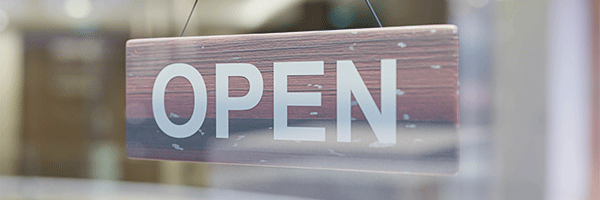
September 17, 2021 | Daily JAM, Volatility |
The CBOE S&P 500 Volatility Index (VIX) closed at 20.69 today, up another 10.7%. That took the “fear index” above the 200-day moving average at 19.98. The VIX had previously moved above the 50-day moving average at 17.86. I’d be surprised if we don’t see more market nerves driving more buying of S&P hedges to send the VIX higher next week.

September 14, 2021 | ALB, CMI, CRWD, Daily JAM, DE, PANW, Short Term |
I found myself humming “I scare myself” this morning as the market continued its September selling. The Dan Hicks and the Hot Licks song pretty much sums up the market action this morning. We all know that stocks go down in September so we’re sending stocks downward. And we all know that September 17 is the Big Bad Day in the month so it’s unreasonable to expect a turn in sentiment before that date. But so far, I’d note, the selling seems “orderly” with the usual candidates bucking the trend and showing up in the green. It’s when those still in the green stocks start tumbling that I’ll really start to worry.

August 26, 2021 | Daily JAM |
Investors and traders are hedging their bets–a little–ahead of tomorrow morning’s speech by Federal Reserve chair Jerome Powell at the central banker’s (virtual) Jackson Hole jamboree. The worry is that Powell will says something relatively concrete about the Fed’s plans for decreasing its monthly $120 billion purchase of Treasuries and mortgage-backed assets. An end to those purchases is a prerequisite to any move by the Federal Reserve to raise interest rates. So any move on the purchase schedule would be an indicator of the Fed’s thinking about when/if to raise benchmark interest rates now at 0% to 0.25%. The odds on bet is that the Fed chair won’t say anything–something Fed chairs are very good at tomorrow–and that the Fed’s Open Market Committee won’t say anything of substance at its September 22 meeting.
August 17, 2021 | Daily JAM, Jubak Picks, MGM, VIX, Volatility, WH |
I try to use big up and (especially) down days in the stock market to stress test my portfolio. One of the things I look to learn from a high volatility down days is how the hedges that I’ve put on to protect my portfolio work under big stress. So, for example, on a big day down day like July 16, when the Dow Jones Industrial Average fell 725 points, I looked to see if 1) the hedges I owned worked to reduce or better yet eliminate my downside losses, and 2) how much those hedges were costing me in opportunities for upside gains postponed.

August 17, 2021 | Daily JAM, Morning Briefing |
Retail sales dropped 1.1% in July, the Commerce Department reported today, August 17. Sales of furniture, sporting goods, building materials, cars and auto parts were all down strongly in the month. Sales at non-store retailers, which include e-commerce sales, dropped 3% in July.

August 12, 2021 | Daily JAM, Volatility |
Today the CBOE S&P 500 Volatility Index (VIX) dropped another 2.24% to 15.70. That puts the “fear index” back in the “complacency zone” where I’ve been looking to buy Call Options on the VIX in anticipation of a bounce back to the top of the current zone at 20 on the next “bad news” day. (Whatever the bad news might be.)

August 7, 2021 | Daily JAM, Friday Trick or Trend |
On Friday, August 6, the CBOE S&P 500 Volatility Index (VIX) retreated another 6.54% to 16.15. That puts the “fear index” back in the “complacency zone” where I’ve been looking to buy Call Options on the VIX in anticipation of a bounce back to the top of the current zone at 20 on the next “bad news” day. (Whatever the bad news might be.) This trade, which is not dependent on any call about a bear market or even a market correction but rather on the simple bounce from levels of extreme compliance, recommends buy the Call Option on the VIX when it breaks below !6 and then selling the Call Option when it breaks above 20.

August 2, 2021 | Daily JAM, Morning Briefing, Short Term |
I’m looking for answers to two big questions that earnings from Amazon (AMZN) and Caterpillar (CAT) left us with last week. In the case of Amazon, where the company reported a slide in revenue growth after a big bump in sales due to everybody ordering everything on line during the Pandemic shutdown, the question is What is the actual sales growth trend once you remove all the plus and minuses from the Pandemic? This isn’t a question just for Amazon, of course. It’s important for figuring out the valuation of everything from Las Vegas hotel and casino play MGM Resorts International (MGM) to streaming champion Netflix (NFLX) to Starbucks (SBUX). The other question left hanging at the end of the week is whether or not we’re about to see a string of companies forecasting lower margins due to rising prices for raw materials. That was the takeaway message from Caterpillar’s (CAT) earnings report.

July 27, 2021 | Daily JAM, Short Term, Volatility |
With the major indexes all down ahead of tech earnings–and fear up–I’m pulling out my VIX options trade again. The rule here, until modified by reality (pesky little thing) is to buy when complacency drives the “fear index” to 16 or below, and to sell when fear rises and pushed the CBOE S&P 500 Volatility Index (VIX) to 20 or so. This morning selling in the market sent the VIX up to 19.85, close enough for me to 20, and I’m selling the October 20, 2021 Call Options

July 19, 2021 | Daily JAM, VIX, Volatility |
As of 2:40 New York time the September 15, 2021 VIX Call Options with a strike at 20 (VIX210915C00020000) were trading at $5.90 a share, up 40.48% on the day on a move higher in the CBOE S&P 500 Volatility Index (VIX) of 30.35% to 24.05. I’m selling this volatility hedge out of my Volatility Portfolio with a profit of 17.5% since I added it to this portfolio on June 1.

July 15, 2021 | Daily JAM, VIX, Volatility |
My strategy for trading volatility using the CBOE S&P 500 Volatility Index (VIX) has two parts

July 6, 2021 | Daily JAM, Morning Briefing |
The Organization of Petroleum Exporting Countries and its affiliated oil producers (OPEC+) abandoned their Monday meeting after days of tense talks failed to result in an agreement on a tentative deal to increase production, and even over how to measure production. The disagreement between Saudi Arabia snd the United Arab Emirates was so heated that OPEC+ couldn’t even agree on a date for its next meeting. When these two countries last clashed in December 2020, the UAE talked of leaving OPEC. Oil prices initially jumped to its highest level in more than six years on news that OPEC+ had failed to agree to increase production. But prices then fell as traders speculated that the failure to reach an agreement on production increases would result in unplanned increases in production.










